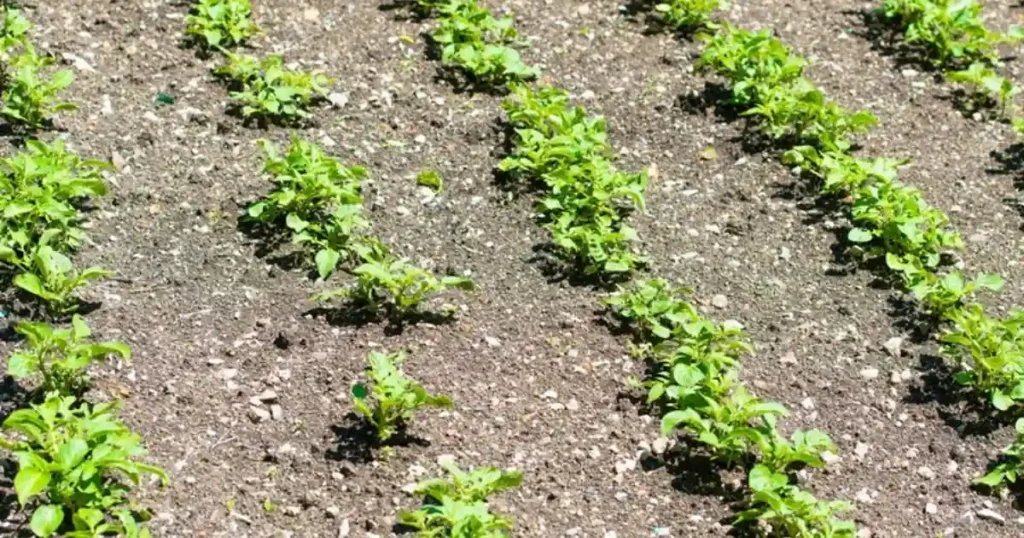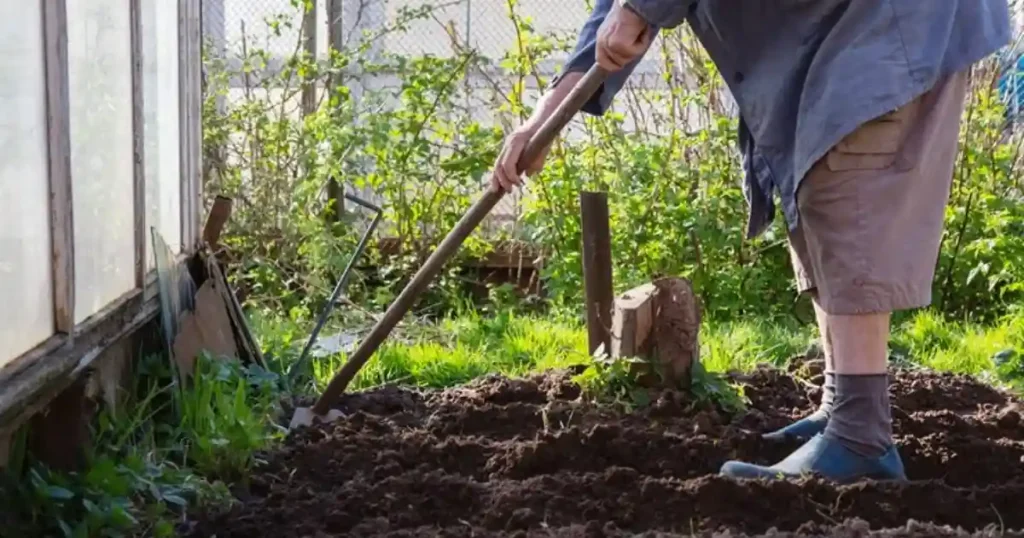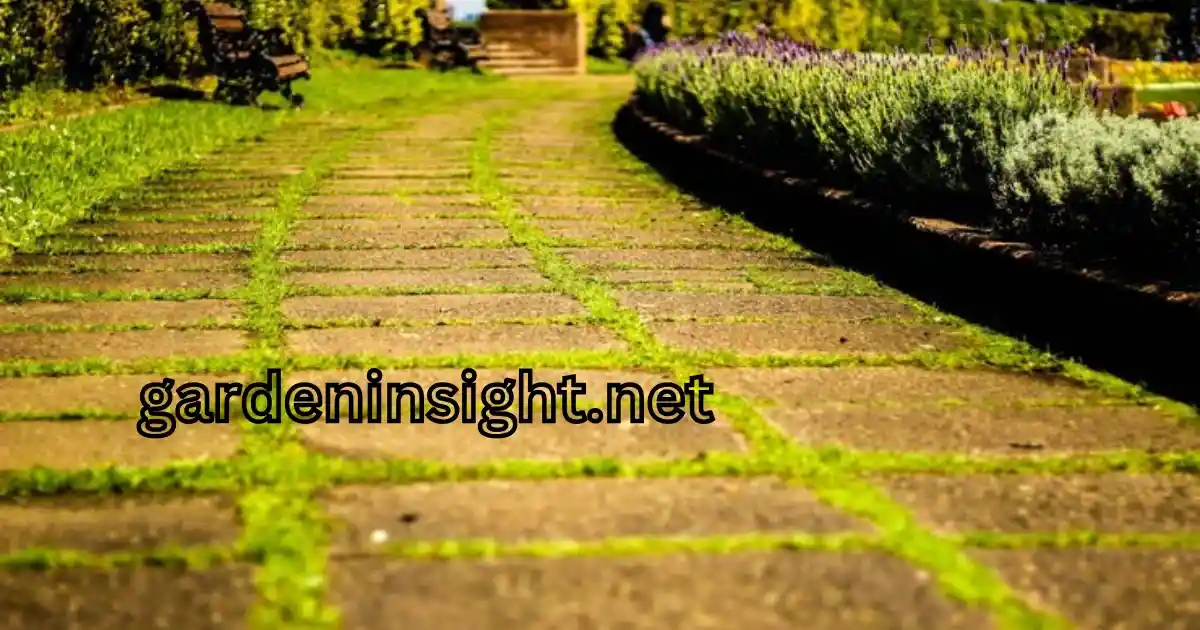Spacing your garden rows correctly is one of the most important things you can do to ensure a thriving garden.
Proper spacing allows plants to access the sunlight, water, and nutrients they need to grow strong and produce abundant yields. But with so many different plants and garden layouts, how do you know how far apart your rows should be?
This comprehensive guide will answer all your questions about garden row spacing. We’ll cover the ideal distances for various plants, factors that influence spacing, and why does proper garden row spacing matters.
Why is Garden Row Spacing Important?

Proper garden row spacing is crucial for several reasons:
- Sunlight: Plants need adequate sunlight to photosynthesize and produce energy. When rows are too close together, taller plants can shade out shorter ones, hindering their growth.
- Air Circulation: Good airflow between plants helps prevent fungal diseases. Densely packed rows can create a humid environment where diseases thrive.
- Nutrient Access: Plants compete for nutrients in the soil. Proper spacing ensures each plant has enough room to access the nutrients it needs.
- Water Availability: Overcrowded plants use up water more quickly, leading to water stress and reduced yields.
- Ease of Access: Adequate spacing between rows allows you to easily access your plants for weeding, watering, and harvesting.
How Does Row Spacing Affect Garden Plant Growth?
The distance between garden rows directly impacts plant growth in several ways:
- Growth Rate: Cramped plants grow more slowly due to competition for resources. Proper spacing promotes faster and healthier growth.
- Yield: When plants have enough space, they produce larger and more abundant yields.
- Plant Health: Overcrowding can lead to stunted growth, weak stems, and increased susceptibility to pests and diseases.
- Fruit Development: For vining crops like cucumbers and melons, adequate spacing allows the vines to spread and develop fruits properly.
How Far Apart Should Vegetable Garden Rows Be?

The ideal spacing between vegetable garden rows depends on the mature size and growth habits of your chosen plants. Generally, most vegetables need at least 12-18 inches between rows to ensure adequate sunlight, airflow, and nutrient access.
Smaller vegetables like leafy greens and root crops can be planted closer together, while larger plants like tomatoes, peppers, and vining crops require more space, often 24-36 inches or more.
Proper spacing promotes healthy growth, maximizes yields, and makes garden maintenance easier. Always refer to seed packets or plant tags for specific spacing recommendations for your chosen varieties.
| Vegetable Type | Row Spacing (inches) | Considerations |
|---|---|---|
| Leafy Greens (Lettuce, Spinach) | 12-18 | Can often be planted closer in wide rows |
| Root Vegetables (Carrots, Radishes) | 12-18 | Thin seedlings to ensure proper spacing |
| Bush Beans | 18-24 | Allow adequate space for air circulation |
| Tomatoes | 24-36 | Stake or cage for support as they grow taller |
| Peppers | 18-24 | May need support for larger varieties |
| Corn | 30-36 | Plant in blocks for better pollination |
| Vining Crops (Cucumbers, Melons) | 48-60 | Provide trellises or ample space to spread |
What Factors Determine the Distance Between Garden Rows?
Several factors influence the ideal distance between garden rows:
- Plant Size: Larger plants need more space than smaller ones. Consider the mature size of the plant, including its height and width.
- Plant Type: Different plants have different growth habits. Vining crops need more space to spread, while bush varieties can be planted closer together.
- Soil Fertility: In fertile soil, plants can be spaced closer together as they have access to more nutrients.
- Gardening Method: Intensive gardening methods, like square foot gardening, utilize closer spacing than traditional row gardening.
- Available Space: The size and shape of your garden will also influence your row spacing.
Remember, these are just general guidelines. Always refer to the seed packet or plant tag for specific spacing recommendations.
What Tools Can Help Measure Garden Row Spacing?

Accurately measuring your garden row spacing is essential for optimal plant growth. Here are some helpful tools:
- Measuring Tape: A long measuring tape is essential for marking out rows and ensuring accurate spacing.
- Garden Twine: Stretch twine between stakes to create straight rows and guide your planting.
- Markers: Use stakes, flags, or even painted rocks to mark the edges of your rows.
- Row Markers: These handy tools create evenly spaced furrows for planting seeds or seedlings.
Can Garden Row Spacing Change for Raised Beds?
Yes, garden row spacing can often be reduced in raised beds. The improved drainage and soil quality in raised beds allow for closer spacing without compromising plant growth. However, it’s still important to consider the mature size and growth habits of your plants.
Comparison of Row Spacing in Traditional vs. Raised Beds
| Garden Type | Recommended Row Spacing (inches) |
| Traditional Garden | 18-36 |
| Raised Bed | 12-18 |
How to Adjust Garden Row Spacing for Small Gardens?
In small gardens, you may need to adjust your row spacing to maximize your growing space. Consider these techniques:
- Vertical Gardening: Grow vining crops on trellises or fences to save space.
- Interplanting: Plant fast-growing crops between slower-growing ones.
- Succession Planting: Plant crops in stages to ensure a continuous harvest and avoid overcrowding.
- Container Gardening: Grow some of your plants in containers to free up space in your garden beds.
Conclusion
Proper garden row spacing is a critical aspect of successful gardening. By understanding the needs of your plants and adapting your spacing accordingly, you can create a productive and healthy garden.
Whether you’re growing vegetables in a traditional setup or optimizing space in a raised bed, thoughtful planning ensures that your garden thrives.
Use tools like row markers and measuring tapes to maintain accuracy, and adjust your approach based on garden size and plant type for the best results. With these practices, you can achieve a flourishing garden season after season.
FAQs about Garden Row Spacing
Some of the frequently inquired questions relevant to garden row spacing are given as:
How does row spacing affect garden plant growth?
Proper row spacing ensures adequate air circulation, sunlight, and nutrient availability, promoting healthier plant growth and reducing disease risk.
Why is garden row spacing important?
Garden row spacing prevents overcrowding, improves maintenance, and ensures each plant gets the resources it needs to thrive.
What tools can help measure garden row spacing?
Tools like measuring tapes, row markers, and planting guides can help maintain consistent and accurate row spacing.
Can garden row spacing change for raised beds?
Yes, raised beds often allow for closer spacing due to better soil quality and drainage, enabling more efficient use of space.
How to adjust garden row spacing for small gardens?
Use intensive planting, vertical gardening, or staggered rows to maximize space in small gardens while maintaining plant health.
